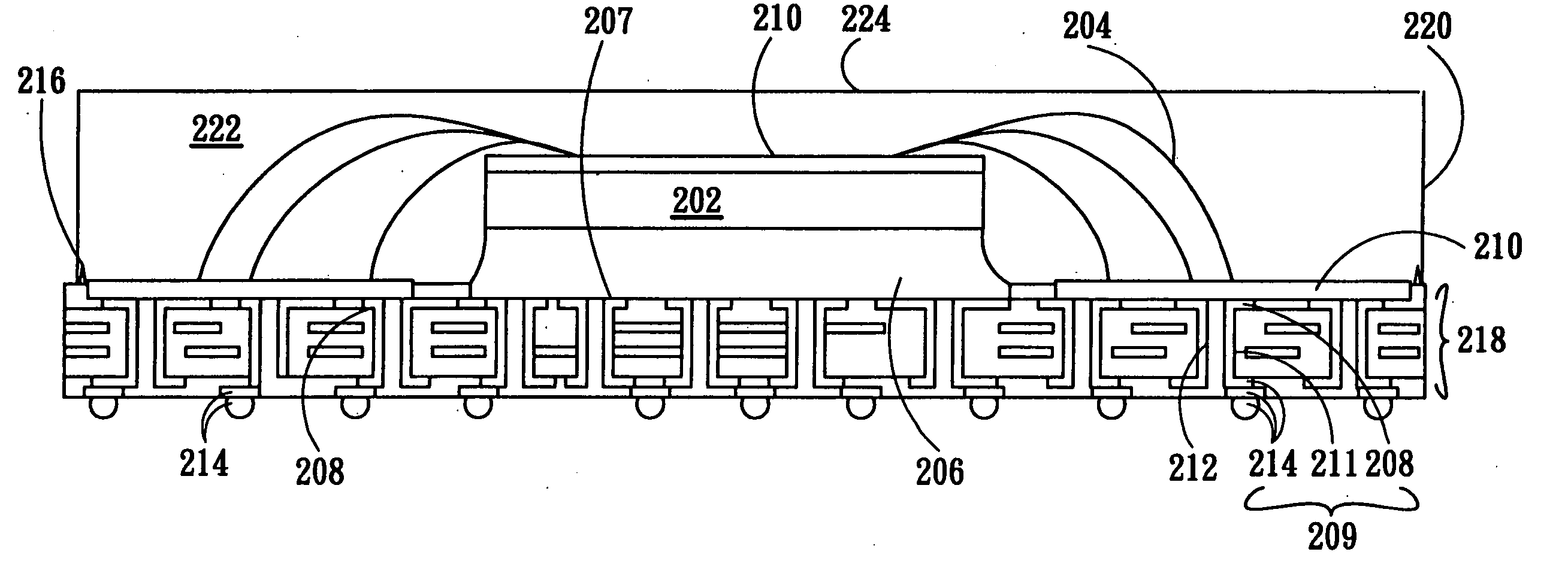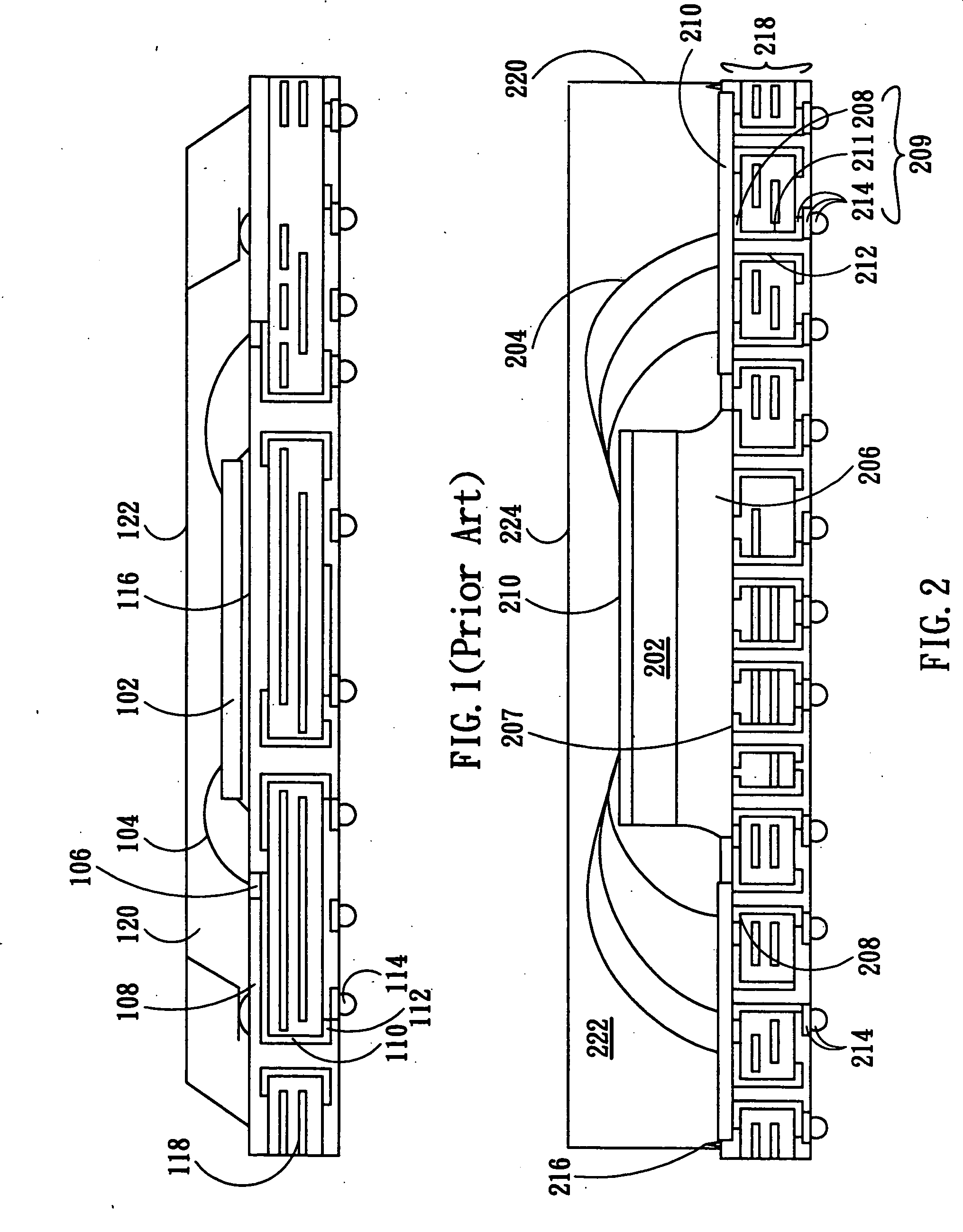Structure and assembly method of integrated circuit package
a technology of integrated circuits and assembly methods, which is applied in the direction of electrical equipment, semiconductor devices, semiconductor/solid-state device details, etc., can solve the problems of large amount of trace routing between solder balls and bonding fingers, easy shorting, and large density of bonding wires, so as to reduce cost, prevent shorting, and simplify trace routing
- Summary
- Abstract
- Description
- Claims
- Application Information
AI Technical Summary
Benefits of technology
Problems solved by technology
Method used
Image
Examples
second embodiment
[0038]FIG. 4 is a cross-sectional view illustrating a packaging structure according to the present invention. At least one leading conductor 205a has one end connected to the ground pad of the die 202, and has the other end exposed and floated over the substrate 218. The exposed end of the leading conductor 205a electrically connects to the conductively filled material 222. Accordingly, the die 202 is grounded through the die-attach material 206 and the ground openings 207. As the leading conductor 205a is formed near the conductive wires 204, the generated heat from the die 202 can be substantially dissipated through the conductive wires 204. Besides, the stop element 216 (FIG. 2) is not used to confine the formation of the insulating layer 210 in this embodiment.
third embodiment
[0039]FIG. 5 is a cross-sectional view illustrating a packaging structure according to the present invention. At least one leading conductor 205b has one end connected to the first conductive structure 208 of the substrate 218, and has the other end exposed and floated over the substrate 218. The exposed end of the leading conductor 205b electrically connects to the conductively filled material 222. The conductively filled material 222 and the second conductive structure 214b together are therefore grounded. The object of electrical shielding can be achieved by using either conductive die-attach material 206 or non-conductive die-attach material 206.
fourth embodiment
[0040]FIG. 6A is a cross-sectional view illustrating a packaging structure according to the present invention. In this embodiment, a leading conductor 205a having one end connected to the ground pad of the die 202 and having the other end exposed and floated over the substrate 218 is used; moreover, another leading conductor 205b having one end connected to the first conductive structure 208 and having the other end exposed and floated over the substrate 218 is also used. The exposed ends of the leading conductor 205a and the leading conductor 205b electrically connect to the conductively filled material 222, and are accordingly grounded with the conductively filled material 222. Therefore, a return path between the substrate 218 and the die 202 is established to substantially shield the electrical effect. FIG. 6B shows an alternative embodiment in which at least one bare (or non-coated) leading conductor 205c is used. The bare leading conductor 205c not only connects between the pa...
PUM
 Login to View More
Login to View More Abstract
Description
Claims
Application Information
 Login to View More
Login to View More - Generate Ideas
- Intellectual Property
- Life Sciences
- Materials
- Tech Scout
- Unparalleled Data Quality
- Higher Quality Content
- 60% Fewer Hallucinations
Browse by: Latest US Patents, China's latest patents, Technical Efficacy Thesaurus, Application Domain, Technology Topic, Popular Technical Reports.
© 2025 PatSnap. All rights reserved.Legal|Privacy policy|Modern Slavery Act Transparency Statement|Sitemap|About US| Contact US: help@patsnap.com



